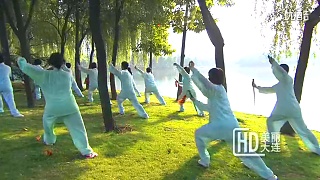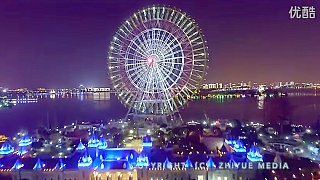
|
With Beijing Old Liu ...
Welcome to Enshi Pingshan Grand Canyon
Introduction
Top Attractions
Activities
Local Culture
Local Cuisine
Visitor Tips
Getting There
Introduction
Enshi Pingshan Grand Canyon, located in Enshi Tujia and Miao Autonomous Prefecture in HuBei Province, is a breathtaking natural wonder known for its dramatic karst landscapes, towering cliffs, deep gorges, and pristine rivers. Often referred to as "China's Grand Canyon," this stunning destination offers a unique combination of natural beauty and cultural richness, making it a must-visit location for nature lovers and adventurers alike.
The canyon stretches for about 108 kilometers and is carved out by the Qingjiang River, creating a series of spectacular geological formations over millions of years. Enshi Pingshan Grand Canyon is a part of the Enshi National Geological Park and is recognized for its scenic beauty and ecological diversity.
Top Attractions
Pingshan Gorge
The Pingshan Gorge is the centerpiece of the Enshi Pingshan Grand Canyon. It features sheer cliffs that rise dramatically from the Qingjiang River, creating a narrow gorge that is both awe-inspiring and serene. Visitors can take a boat ride through the gorge to fully appreciate its towering rock formations, clear waters, and lush vegetation.
Qingjiang River
The Qingjiang River, known as the "Mother River" of the Enshi region, winds its way through the canyon, offering stunning views of the surrounding karst landscape. The river is renowned for its emerald green waters, which contrast beautifully with the steep cliffs and dense forests along its banks. The river is perfect for leisurely boat trips or more adventurous white-water rafting.
Yunlong Ground Crack
One of the most unique geological features of the Enshi Pingshan Grand Canyon is the Yunlong Ground Crack. This deep fissure in the earth's surface is more than 3 kilometers long and varies in width, creating a dramatic and almost otherworldly landscape. Visitors can walk along the edge of the crack and peer into its depths, offering a thrilling experience for geology enthusiasts and adventure seekers.
Qingjiang Ancient Town
Qingjiang Ancient Town, located near the canyon, is a beautifully preserved historic town that offers a glimpse into the regionâs rich cultural heritage. The town is home to traditional Tujia and Miao architecture, ancient temples, and vibrant markets. Itâs an ideal place to experience the local culture and enjoy traditional performances, handicrafts, and cuisine.
Activities
Boat Rides: Explore the stunning Pingshan Gorge by taking a boat ride along the Qingjiang River. This serene journey allows you to fully appreciate the towering cliffs, emerald waters, and lush greenery that make this canyon so special.
Hiking: The Enshi Pingshan Grand Canyon offers numerous hiking trails that wind through its rugged terrain. Whether you're looking for a challenging climb or a leisurely walk, there are trails for all levels, each offering breathtaking views of the canyon.
Rafting: For the more adventurous, white-water rafting on the Qingjiang River is a thrilling way to experience the canyonâs natural beauty. The river's rapids vary in intensity, providing excitement for both beginners and seasoned rafters.
Photography: With its dramatic landscapes, the Enshi Pingshan Grand Canyon is a paradise for photographers. The play of light and shadow on the cliffs, the reflection of the mountains in the river, and the vibrant colors of the vegetation make for stunning photographs.
Local Culture
The Enshi region is home to the Tujia and Miao ethnic minorities, both of which have rich cultural traditions that are still very much alive today. Visitors to the Enshi Pingshan Grand Canyon have the opportunity to experience these unique cultures firsthand.
The Tujia people are known for their distinctive folk songs, dances, and Baishou Dance, a traditional group dance that is often performed during festivals. The Miao people, on the other hand, are famous for their intricate silver jewelry, colorful traditional costumes, and lively music.
Local festivals, such as the Tujia New Year and the Miao Sisters' Meal Festival, offer a vibrant display of the region's cultural heritage, with traditional performances, parades, and feasts that are a delight to witness.
Local Cuisine
The cuisine of the Enshi region is heavily influenced by the Tujia and Miao ethnic groups, offering a unique blend of flavors and ingredients. Some must-try dishes include:
Tujia Bacon: A local specialty, Tujia bacon is smoked over a wood fire, giving it a rich, smoky flavor. It's often served with vegetables or used as a flavoring in soups and stews.
Sanxia Fish: Freshwater fish from the Qingjiang River, prepared in a variety of ways, including grilling, steaming, and stewing. The fish is known for its tender meat and delicate flavor.
Enshi Green Tea: The Enshi region is famous for its green tea, which is grown in the mountains surrounding the canyon. The tea is known for its bright color, fresh aroma, and mellow taste.
Maize Dishes: Corn is a staple in the local diet, and many dishes feature maize as a primary ingredient. Maize pancakes, steamed corn buns, and corn porridge are all popular dishes in the area.
Pickled Vegetables: A variety of pickled vegetables are served as side dishes or snacks, providing a tangy and refreshing contrast to the richer flavors of the main dishes.
Visitor Tips
Best Time to Visit: The best time to visit Enshi Pingshan Grand Canyon is from April to October, when the weather is mild, and the landscape is at its most beautiful. Spring and autumn are particularly recommended for their pleasant temperatures and stunning natural scenery.
Altitude: The canyon is situated at a moderate altitude, so visitors should be prepared for slightly thinner air, especially during strenuous activities. It's advisable to take it easy on the first day to acclimate.
Clothing: Comfortable walking shoes and layered clothing are recommended, as temperatures can vary throughout the day. Be prepared for rain, especially in the summer months, by bringing a waterproof jacket or poncho.
Safety: Always stay on designated paths and follow the guidance of local guides, especially when exploring the more rugged areas of the canyon. The terrain can be challenging, and it's important to be cautious.
Respect Local Customs: When visiting the Qingjiang Ancient Town or interacting with local communities, be respectful of local customs and traditions. Always ask for permission before taking photos of people or cultural sites.
Getting There
The Enshi Pingshan Grand Canyon is located in Enshi Tujia and Miao Autonomous Prefecture in HuBei Province. Here are some transportation options:
By Air: The nearest airport is Enshi Xujiaping Airport, which has flights to major cities such as Beijing, Shanghai, and Chengdu. From the airport, you can take a taxi or bus to reach the canyon.
By Train: Enshi is well-connected by train, with regular services from major cities like Wuhan, Chongqing, and Yichang. From Enshi Railway Station, you can take a bus or taxi to the canyon.
By Bus: Long-distance buses operate from nearby cities to Enshi, and local buses or taxis can take you to the canyon from the city center.
By Car: If you prefer to drive, Enshi is accessible via highways from major cities in HuBei and the surrounding provinces. The scenic drive offers beautiful views of the countryside and mountains.
|

 Evening Walk in Dalian’s Oriental Water City
Evening Walk in Dalian’s Oriental Water City


























